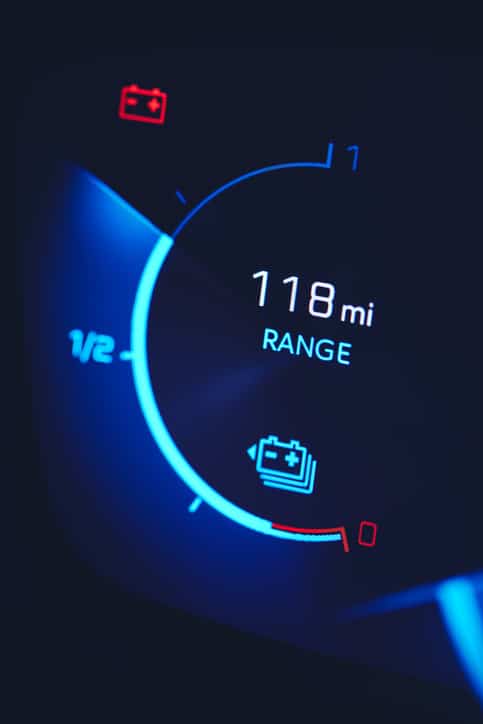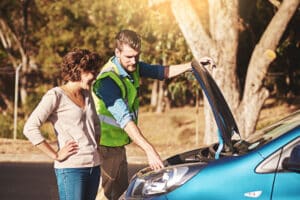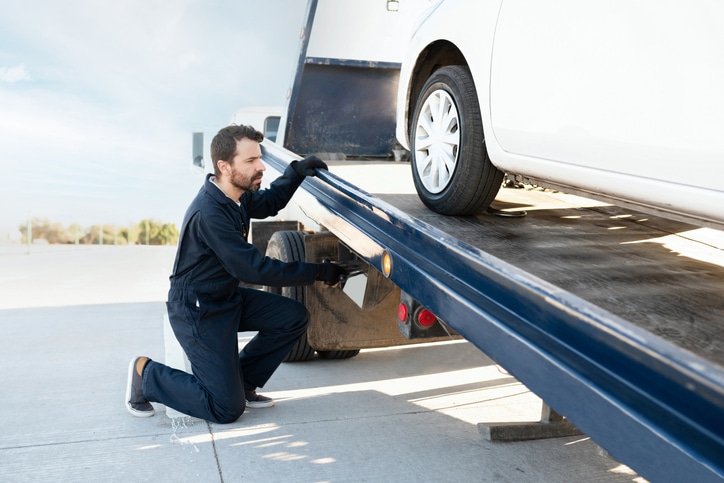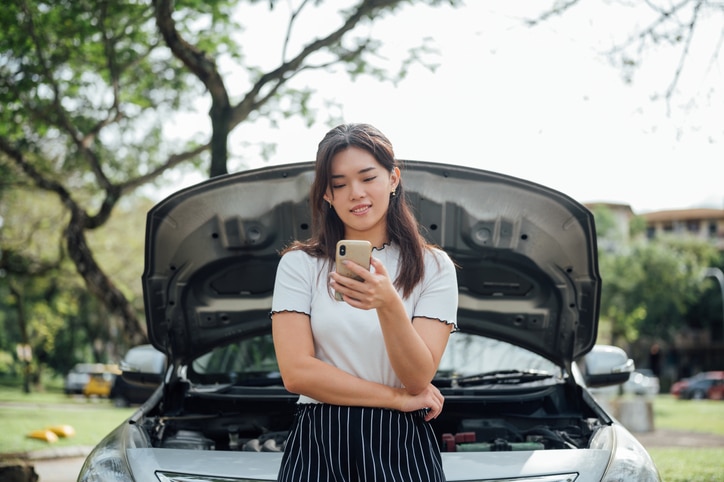What Happens If Your Electric Car Runs Out Of Battery
May 9, 2023
Range Anxiety is a thing, but it isn’t as scary as it sounds. When Folks get an EV one of the things they need to think about is how what happens if they run out of juice. The truth is, that sure, you can run out of power in your EV but, there are plenty of ways to stay on top of that, and if it does happen there are some solutions to help you get rolling again.
If you do run out of power, remember it isn’t the end of the world. EV batteries are designed to last at least 8 years, and if you burn the battery down to 0 there is very little risk of damage. Of course, if you run out of power you may not be close to a charger, but not to worry, most roadside assistance and TOW trucks will be able to hook up and give you some charge to get you going.
Running out of power with an EV vs running out of gas
Running out of power with an EV
EVs have tools built into them to actually make it harder to run out of power than if you were in a gas-powered vehicle. You of course have your guage that shows you how much charge you have left and what your estimated range is based on your charge level.
As your battery gets lower your EV will give you multiple signals that it is getting lower and you should consider charging soon. And, along with extra warnings, it will also show you where the closest charging stations are.
When you get really low, you will notice a huge difference because your car will go into, what is lovingly called, Turtle Mode. What Turtle Mode does is it makes adjustments to the car to help it last longer in that last chunk of battery. Some adjustments will limit the speed you drive, and how fast you can accelerate, and it may even adjust some of the climate settings.
Running out of fuel with a gas car can cause more issues than just no fuel. Meanwhile, in an EV if you do run out of power you don’t need to worry about damage to your powertrain, fuel pump, fuel filters, and really anything having to do with gas
Running out of Gas with an Internal Combustion Engine (ICE) Car or Truck
When running out of gas in a car with an internal combustion engine (ICE) you are going to get some of the same signals you might from an EV; Warning lights, an audible warning. Additionally, you will notice some differences in how your car is driving.
As your ICE car runs out of gas you will start to notice the power steering may not be as responsive, braking may be harder, and the ride will not be as smooth as the car starts to stutter as it struggles for fuel. When the Fuel is totally gone your car will stall and stop
When you get fuel for your car you will want to check the owner’s manual or do a little research online to see what is the best way to restart your car. Most vehicles will want you to pump the gas pedal a few times with the car off, then turn your key to the on position, then repeat that 3 or 4 times, then finally turn the key all the way to attempt to start your car. If that doesn’t start try again, but it might also mean it is time for a tow.
After you get your car running again it may be a good idea to take your car into a shop and get it checked out. One thing to remember is your fuel works as a lubricant for a lot of internal parts. Running out of fuel in your car can do damage to your powertrain, fuel pumps, fuel filters, and pretty much anything that the fuel helps run.
If you are running diesel there are a couple extra things to consider. Diesel engines have two fuel pumps and you will need to make sure to bleed the system. It isn’t a tough process, but you will want to dig into your owner’s manual or get professional help on this one.
What to do when you run out of power in your EV
So, you didn’t calculate how close to a charging station was correctly, or you took a wrong turn and you have run out of power, now what? Your EV is heavy, so even if you are close it may be tough to push your car to the charger so you may have to choose one of a few other options.
Mobile Charging
While there are no small backup battery packs that you can toss in your trunk to help charge, it is a good idea to make sure you have an extra charging cable. There are some larger mobile batteries for charging EVs, but due to size and cost, these are mostly used by roadside assistance and tow companies.
Here are a couple of examples of portable charging solutions that may be brought out to you.
Roadside Assistance
If you run out of fuel a great option is to reach out to your roadside assistance carrier, and it may be a good idea to see what kind of EV support your roadside assistance carrier can provide.
Here in Portland and Vancouver AAA provides some EV support. They are adding mobile chargers to their trucks. These charges take about 30 minutes and will get you about 10 miles, which should be enough to get you to the next charging station.
If your Roadside assistance doesn’t have portable chargers, they then tow your car to the next charging station
Can you jump-start an electric car?
Your EV has two batteries. The ones we’ve been talking about are the ones that power your car, but there is also a 12v battery, just like in ICE cars, that helps unlock your doors with your fob, turn on lights when the car isn’t on, and things like that. This battery can be jumped, and it doesn’t take much to do so since it doesn’t handle as much of a workload as a battery in an ICE car
What drains my battery?
When you are planning your drive and trying to stretch your charge as far as it can go, it is good to have an idea of what affects your battery life while you are out and about.
- Freezing Temperatures
- When it is really cold out, your EV will have a harder time keeping it running.
- Highway driving
- When you are driving on the highway you do not use your regenerative braking system as much, so it is a more constant drain
- Driving/Acceleration
- Of course, driving your car will drain your battery, but also the way your drive can drain it faster. Trying to keep your acceleration smooth and allowing your car to slow with the regenerative braking will help keep this to a minimum
- In-cabin climate control
- If you are running the heat or running the AC it will take energy from your battery. The more you run it, the more it drains your battery. Your heated seat actually takes less energy than running the heat since you don’t need the fan to run.
- Weight
- This is pretty straightforward, and no different than a gas car. The more weight it must move, the more the engine must work to move the car.
- Navigation and Infortainment
- Screens are getting bigger and the computers are getting stronger, and with that, they need more power. It isn’t a huge drain, but it is one of the things you can make some adjustments to try to squeeze the extra mile.
Conclusion
Nobody wants to run out of power in their EV, but if you do run out of juice, it isn’t a big deal. You won’t damage your car as you would with an ICE car, and it may take a little longer to fuel up, but you won’t have to worry about being able to get your car up and running again.
If you are here shopping for a new EV or you are a current EV owner, we hope this was helpful, and feel free to reach out to our amazing service teams, who have special training on EVs, to answer your questions.
Contact Us



